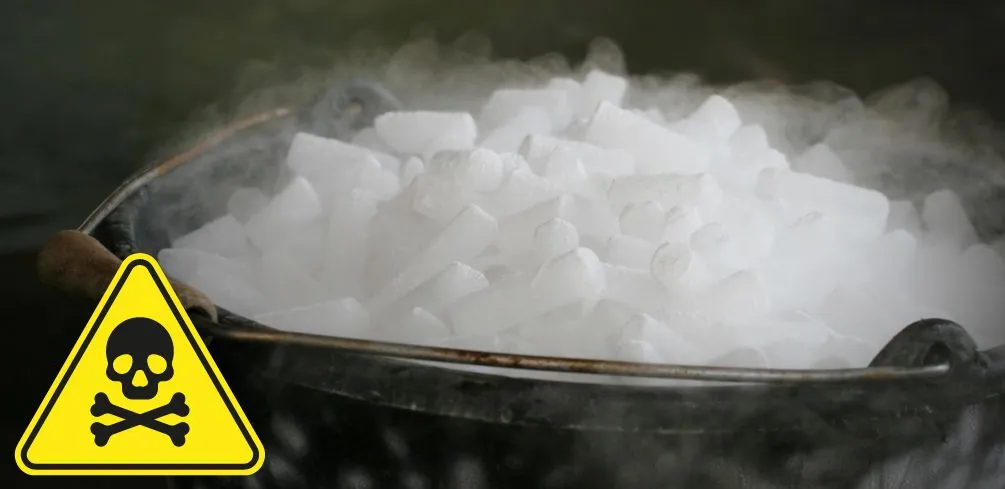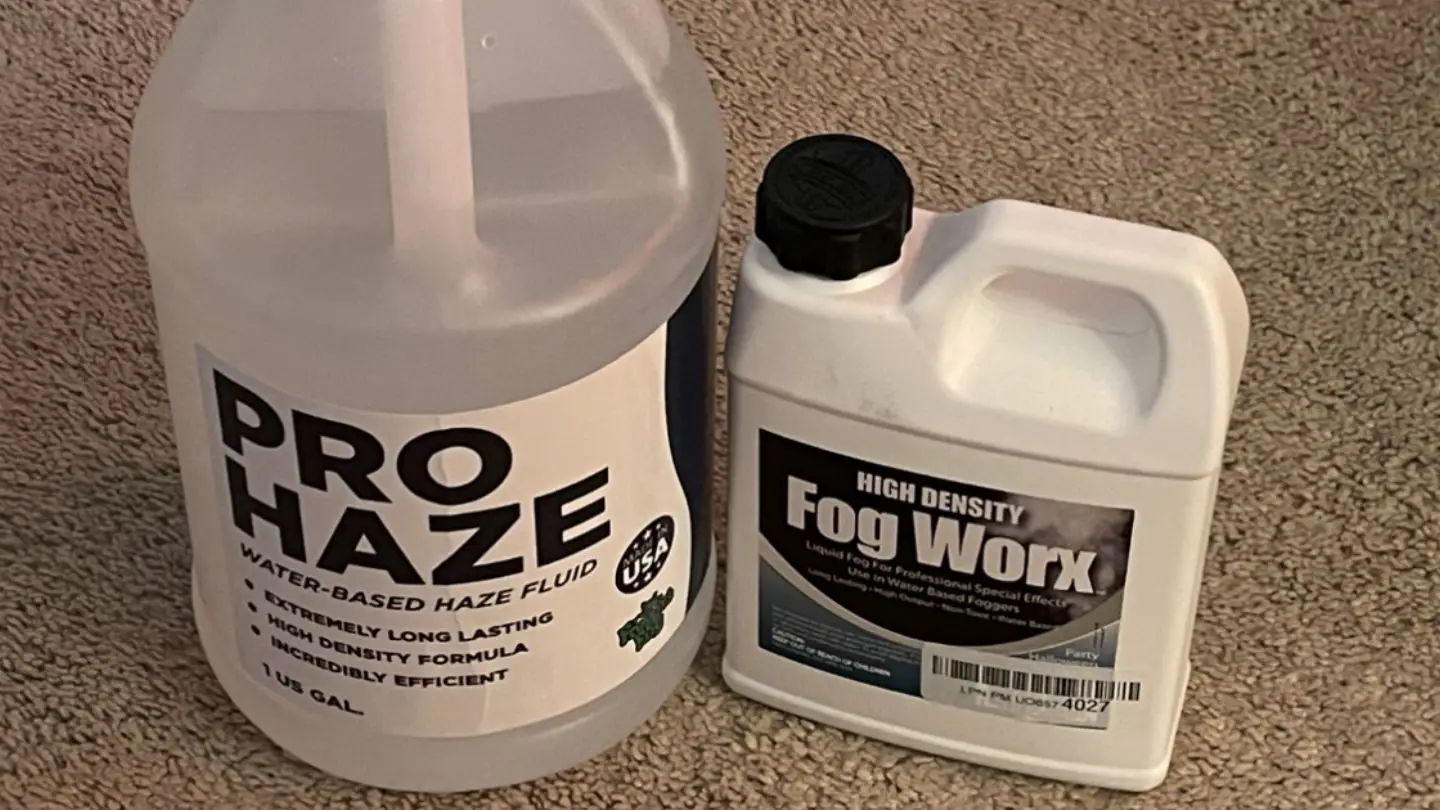Are you curious about the potential dangers of dry ice? If so, then it’s time to learn more. Dry ice is a solid form of carbon dioxide and is often used for special effects in theatrical productions or other events.
But what are the risks associated with using this type of substance? Is dry ice toxic if inhaled or ingested?
How should it be stored and handled safely when not in use? In this blog post, we’ll answer all these questions and explore alternatives to using dry ice too! So join us as we dive into exploring whether or not “is dry ice toxic?”
What is Dry Ice?
Dry ice is a form of carbon dioxide in its solid state. It has a temperature of -109.3°F (-78.5°C) and does not melt like regular ice but instead sublimates directly from a solid to a gas when exposed to room temperature air. This process is known as “sublimation” and it produces an eerie fog-like effect that can be used for special effects or cooling purposes.
Dry ice is the frozen form of carbon dioxide (CO2). It has no liquid phase and exists only as a solid at temperatures below -109 degrees Fahrenheit (-78 degrees Celsius). The most common use for dry ice is to keep food cold during shipping or storage. Still, it has many other uses, including theatrical effects, cryotherapy, industrial cleaning processes, and more.
Due to its extremely low temperature, dry ice must be handled with extreme caution as contact with skin can cause severe frostbite in seconds due to rapid heat transfer from the body into the cold surface area of the dry ice block or pellet.
Additionally, because CO2 gas is heavier than air, when released into enclosed spaces such as rooms without adequate ventilation it can lead to oxygen deprivation which could result in suffocation if inhaled in large enough quantities over time.
Other uses include using blocks/pellets for cryotherapy treatments on muscle injuries; cleaning surfaces with high-pressure jets powered by compressed CO2 gas; keeping food fresh during transport and storage; preserving biological specimens; making homemade slushies and snow cones, etc.
Dry ice is a versatile and unique form of frozen carbon dioxide with many uses in fog machines, humidifiers, and diffusers. Now let’s look at the potential toxicity of dry ice.
Is Dry Ice Toxic?
Dry ice is frozen carbon dioxide and can be used for various purposes, such as cooling food or creating special effects. However, it is important to understand the potential risks associated with dry ice exposure before using it.
Potential Health Risks of Dry Ice Exposure:
Dry ice can cause serious health problems if not handled properly. Inhaling large amounts of dry ice vapor can lead to difficulty breathing, dizziness, headaches, loss of consciousness, and even death. Skin contact with dry ice should also be avoided because it can cause frostbite due to its extremely low temperature (-109°F).
Precautions to Take When Handling Dry Ice:
To reduce the risk of injury when handling dry ice, wear protective clothing such as gloves and safety glasses. It is also essential to keep your face away from the container containing the dry ice so that you do not inhale any vapors produced by sublimation (the process by which solid carbon dioxide turns into gas).
Additionally, never store or transport dry ice in an airtight container, as this could result in an explosion due to pressure buildup inside the container.
The use of dry ice has some environmental impacts that should be considered before use. For example, when exposed to air at room temperature, carbon dioxide gas will escape into the atmosphere contributing to global warming and climate change.
Additionally, improper disposal of unused or expired dry ice may pollute nearby water sources since liquid CO2 is highly soluble in water and would contaminate them if released directly into them without proper treatment first. Learn more on how to dispose of dry ice.
It is important to understand the potential health risks and environmental impact of dry ice before using it, as well as how to handle it safely. The next heading will discuss the benefits of fog machines, diffusers, and humidifiers.
How to Store and Handle Dry Ice Safely
Storing and handling dry ice safely is an important part of using this product. Dry ice can be dangerous if not handled properly, so it’s important to take the necessary precautions when storing and transporting it.
Proper Storage Techniques for Dry Ice:
It is best to store dry ice in a well-ventilated area away from any heat sources or combustible materials. The container should also be insulated with either foam or cardboard, as these will help keep the temperature low and prevent any potential explosions from pressure buildup inside the container.
It is also recommended that you place a layer of newspaper between each layer of dry ice, as this will help absorb moisture which could cause problems later on.
Tips for Handling and Transporting Dry Ice Safely:
When handling dry ice, always wear protective gloves and goggles, as it can cause severe frostbite if touched directly with bare skin. Additionally, never transport large amounts of dry ice in enclosed vehicles without proper ventilation, as carbon dioxide gas can build up quickly, causing suffocation hazards.
If possible, use containers made specifically for transporting dry ice, such as Styrofoam coolers which are designed to keep temperatures low while allowing some air circulation at the same time.
In addition to wearing protective gear such as gloves and goggles when working with dry ice, it is also recommended that you have a fire extinguisher nearby in case of any accidents involving flames or sparks near your work area.
Furthermore, having a first aid kit handy is advisable since its cold temperature can cause serious burns if exposed too long without protection from clothing or other items like blankets or towels that provide insulation against extremely cold temperatures.
By following the proper storage and handling techniques for dry ice, you can ensure that your dry ice fog machine, humidifier, or diffuser is safe to use. Next, we’ll explore the potential health risks associated with exposure to dry ice.
How to Dispose of Used or Unused Dry Ice
Dry ice is a solid form of carbon dioxide that can be used for many purposes, including cooling and fog effects. However, it must be handled with care as it can cause harm to people and the environment if not disposed of properly.
Appropriate Disposal Methods for Used or Unused Dry Ice:
It is important to dispose of dry ice in an appropriate manner after use. The best way to do this is by allowing the dry ice to evaporate completely in a well-ventilated area away from people and animals.
If you cannot wait until the dry ice has fully evaporated, you may also submerge it in water until all of the gas has been released before disposing of it safely. Additionally, unused dry ice should never be placed in a sealed container or garbage bag, as this could lead to dangerous pressure buildup, resulting in injury or property damage.
Regulations Regarding the Disposal of Used or Unused Dry Ice:
Depending on where you live, there may be local regulations regarding how used or unused dry ice should be disposed of safely. In some areas, disposal into sewers may be prohibited due to potential clogging issues caused by frozen carbon dioxide particles; therefore, contact your local waste management authority for more information about proper disposal methods within your region.
Carbon dioxide is one of several greenhouse gases responsible for global warming; thus, when disposing of any amount – large or small – consideration must always be given to reducing emissions into our atmosphere whenever possible.
To minimize environmental impact when disposing of used or unused dry ice, ensure that no excess gas escapes during transport and storage before final disposal at an approved facility designated by your local authorities.
Proper disposal of dry ice is essential to protect the environment, as well as abide by regulations. Next, we’ll discuss alternative uses for using and storing dry ice.
Alternatives to Using and Storing Dry Ice
When it comes to alternatives to using and storing dry ice, there are a few options available. Each of these has its own advantages and disadvantages that should be considered before making a decision.
Advantages and Disadvantages of Alternatives to Using and Storing Dry Ice:
The main advantage of an alternative is that it eliminates the need for handling or storing dry ice, which can be dangerous due to its extremely low temperature. However, some alternatives may not provide the same level of cooling power as dry ice does.
Additionally, depending on the type of alternative chosen, the cost may also be a factor in determining whether or not it’s worth switching from traditional methods.
Types of Alternatives to Using and Storing Dry Ice:
There are several types of alternatives available when looking for ways to replace dry ice storage or use. These include gel packs, liquid nitrogen tanks, phase change materials (PCMs), insulated containers with cold packs inside them, refrigerated shipping containers/trailers with built-in cooling systems, etc.
Each option has its own pros and cons that must be taken into consideration before deciding which one is best suited for your needs.
Depending on what type of alternative you choose will determine how much money you save compared to using traditional methods, such as purchasing large amounts of dry ice at once or renting a refrigerated trailer/container with built-in cooling systems installed in them. Gel packs tend to have lower upfront costs than other options but require more frequent replacement due to their shorter lifespan.

In contrast, liquid nitrogen tanks offer greater efficiency but come with higher initial costs associated with installation fees and regular maintenance expenses over time. PCMs are generally cheaper than gel packs and liquid nitrogen tanks but do not provide as much long-term cooling power either; however, they can still be effective if used correctly within certain temperature ranges.
Insulated containers paired with cold packs inside them offer great portability without sacrificing too much insulation performance; however, they tend to have high upfront costs associated with purchasing all the necessary components needed for setup, plus additional energy bills incurred from running the equipment regularly.
Lastly, refrigerated shipping trailers/containers typically have higher upfront costs than any other option mentioned here since they require specialized equipment and ongoing maintenance expenses over time.
However, they offer superior insulation capabilities compared to all other alternatives discussed so far, thus making them ideal solutions when needing maximum protection against extreme temperatures during transportation over long distances.
Overall, each method has its own set of advantages and disadvantages that must be carefully weighed against one another prior to choosing an appropriate solution based on individual needs and preferences while taking into account budget constraints at the same time, if applicable.
While dry ice is a convenient and cost-effective way to create fog, it’s important to be aware of the potential hazards associated with its use. Fortunately, there are other alternatives available that can provide similar effects without the same risks. Let’s explore some of these options in more detail.
FAQs in Relation to “Is Dry Ice Toxic?”
Conclusion
In conclusion, dry ice is a useful tool for fog machines, humidifiers, and diffusers. However, it is important to understand that dry ice can be toxic if not handled properly. It is important to store and handle dry ice safely in order to avoid any potential health risks associated with its use.
Additionally, it is essential to dispose of used or unused dry ice correctly in order to minimize environmental damage. If you are looking for an alternative option for your fog machine or another device, there are many options available on the market today that do not require the use of dry ice.
Ultimately, understanding whether or not “is dry ice toxic” should be taken into consideration when deciding how best to utilize this product in your home or business setting.
Are you concerned about the potential toxicity of dry ice? Are you looking for solutions to keep your fog machine in working order and prevent any safety risks from occurring? Look no further!
Our project provides detailed information on diffusers, humidifiers, repair techniques, and reviews so that you can make an informed decision when it comes to keeping your equipment safe. Don’t let toxic fumes ruin your event; get educated today with our comprehensive guides.
Please be careful and use at your own risk
None of the authors, contributors, administrators, or anyone else connected with Wild Fog, in any way whatsoever, can be responsible for your use of the information contained in or linked from these web pages.










